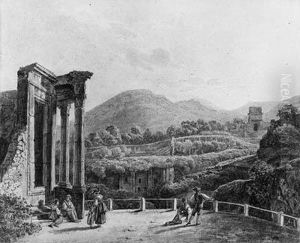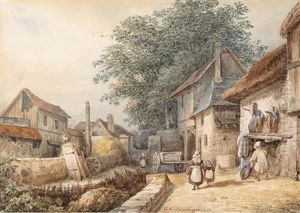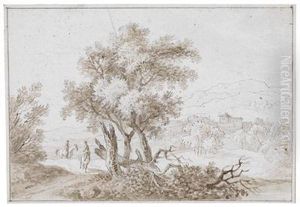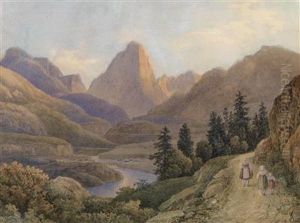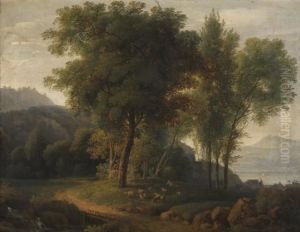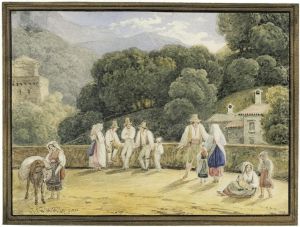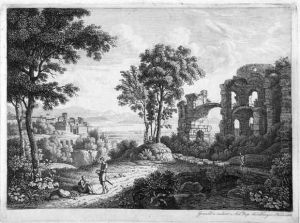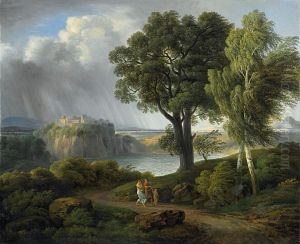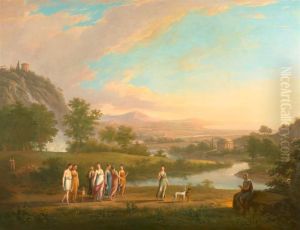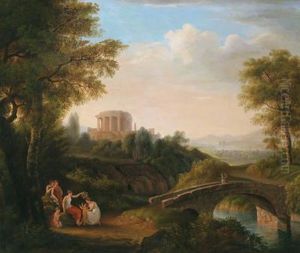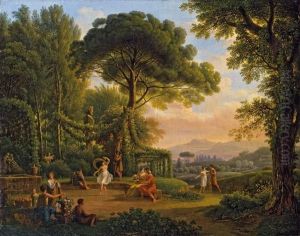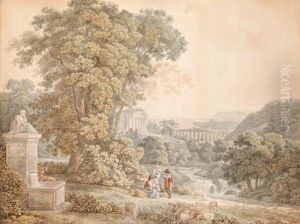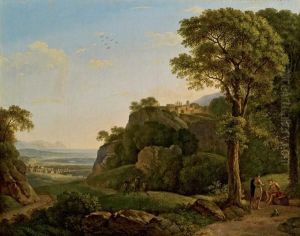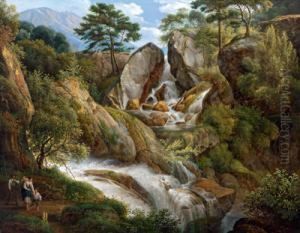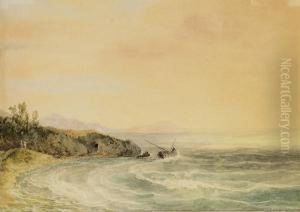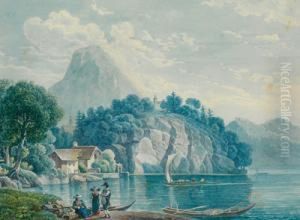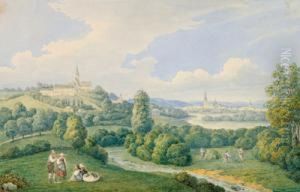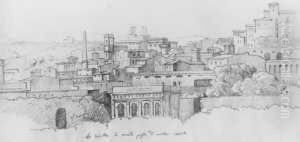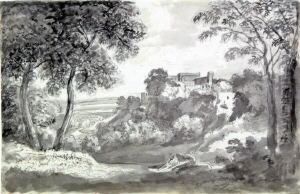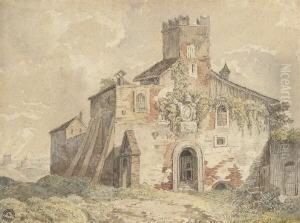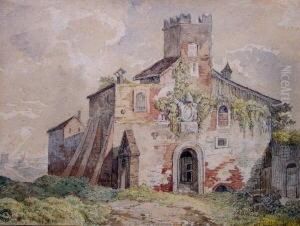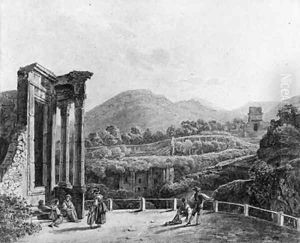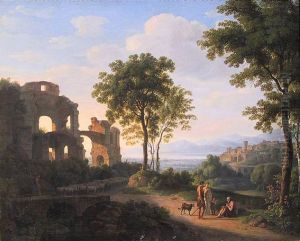Johann Nepomuk Schodlberger Paintings
Johann Nepomuk Schodlberger was an Austrian painter born on March 16, 1779, in Linz, Austria. He was primarily known for his landscape paintings that often depicted the Austrian countryside with a romantic sensibility. Schodlberger's artistic journey began under the tutelage of his father, who was a relatively unknown painter. He later moved to Vienna to further his studies and was influenced by the works of other landscape artists of the time.
Schodlberger's style was characterized by its attention to detail and his ability to capture the various moods of nature. He was adept at using light and shadow to create atmospheric effects in his landscapes. His paintings often included rural scenes, with figures of people and animals to give a sense of scale and life to his works. These scenes were not just mere representations but were imbued with a sense of the sublime and the picturesque, reflecting the romantic spirit that was prevalent in the arts during the early 19th century.
During his career, Schodlberger exhibited his works in various art shows and gained recognition for his contributions to landscape painting. His works were appreciated for their poetic qualities and their embodiment of the idyllic Austrian countryside. Despite this, Schodlberger never gained the same level of fame as some of his contemporaries. Nevertheless, his paintings remain a valuable part of Austria's cultural heritage and provide insight into the romantic period's artistic movements.
Johann Nepomuk Schodlberger passed away on July 7, 1853, in Linz. Although he is not as widely remembered as some other artists, his work continues to be studied and admired by those interested in Austrian art and the development of landscape painting in the 19th century. His legacy lies in his ability to capture the beauty and essence of Austria's landscapes, which continue to enchant viewers to this day.
